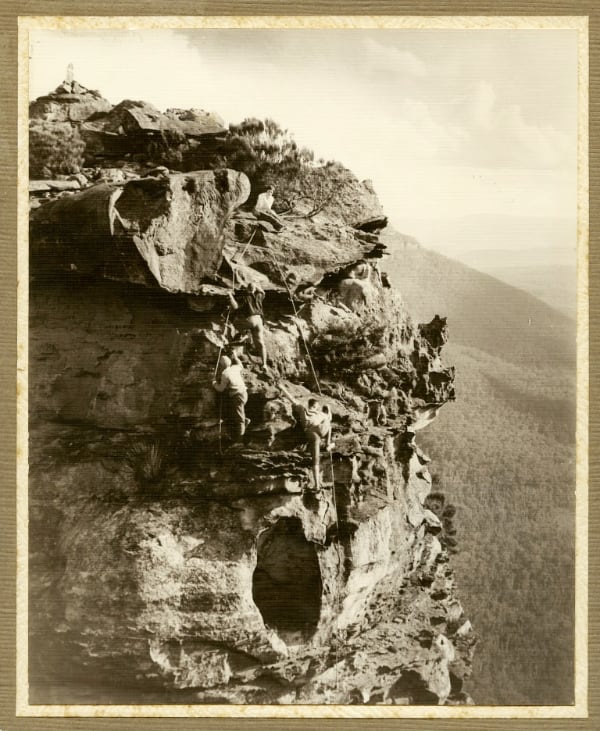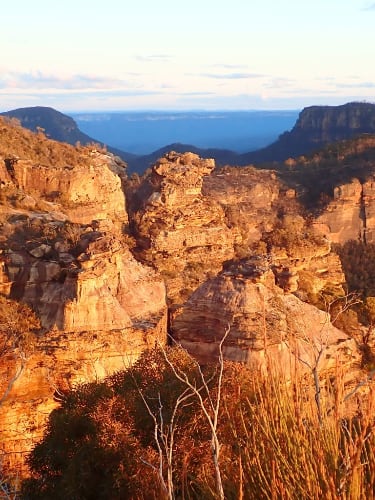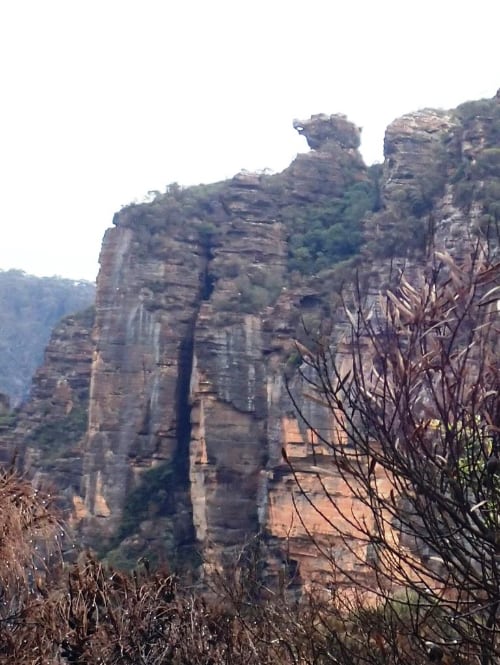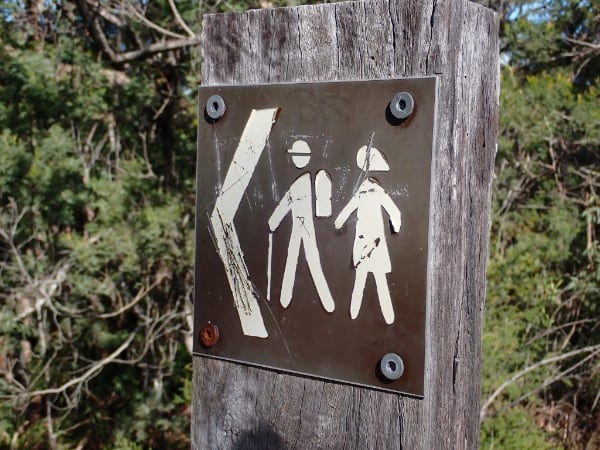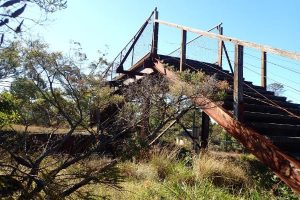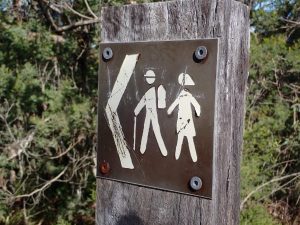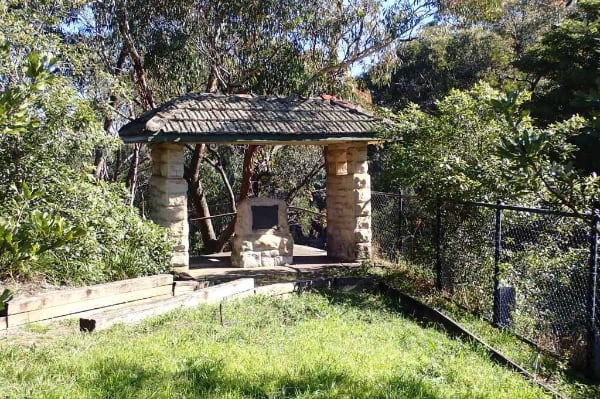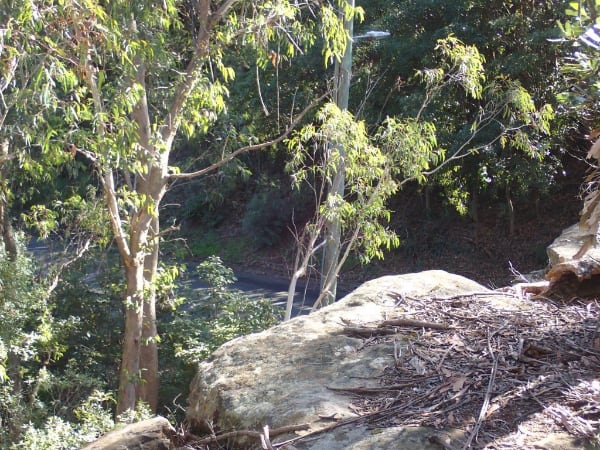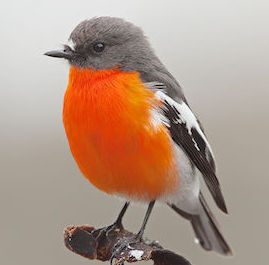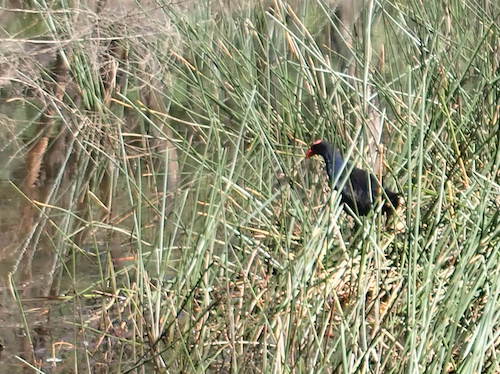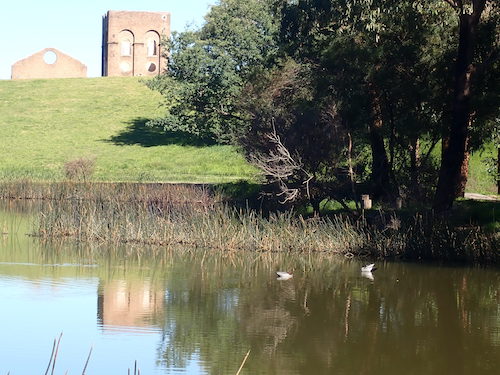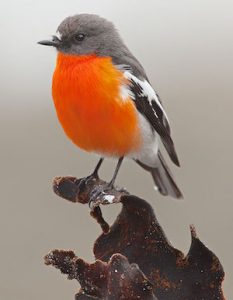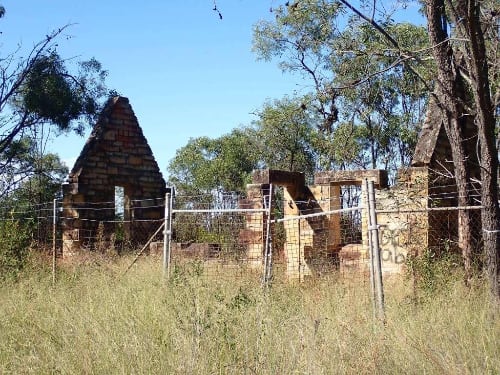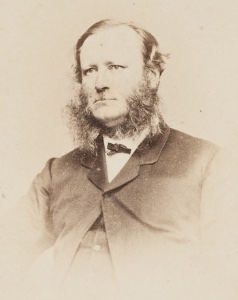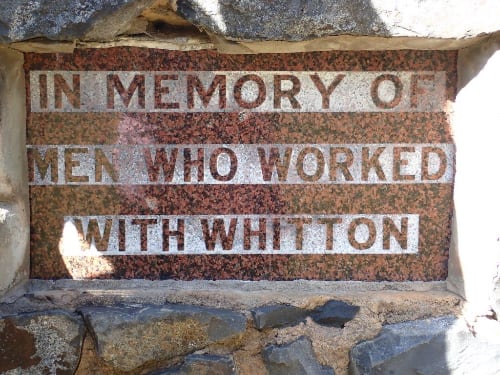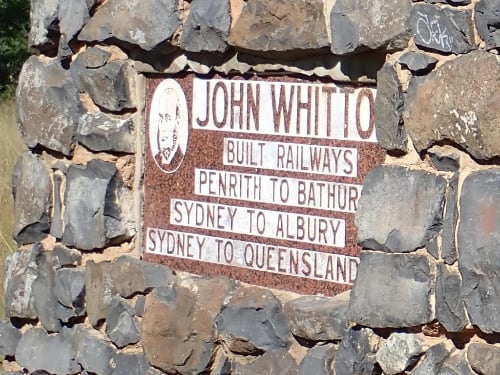MOODS OF THE BOARS HEAD, KATOOMBA
Boars Head has been a name used for a feature in Katoomba at least since 1882 and was described in the Katoomba and Leura Illustrated Guide of 1940 as “The perfect presentation of the head of a great boar, the beetling snout, the slavering jaws, the curved tusks”.
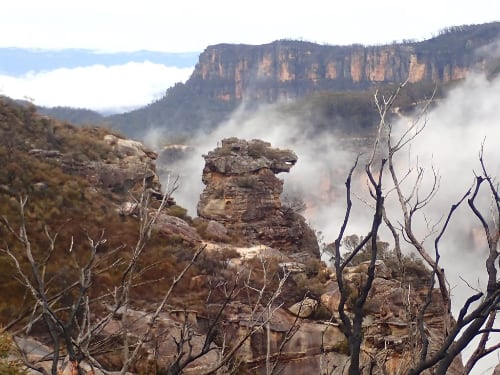
Today, Cahills Lookout and the Narrowneck fire trail are increasingly visited areas of Katoomba and a meet and greet ranger from National Parks & Wildlife Service has given information to visitors to the fire trail on certain days. Very few prominent features in the Blue Mountains can be easily photographed against such a variety of completely natural backgrounds – all the more so since the State Government purchase of Ngula Bulgarabang has apparently ruled out development on that outstanding plateau which provides a forest backdrop across Nellies Glen from the Boars Head.
|
|
The vicinity is worth revisiting to appreciate the changes in the Boars Head appearance according to the weather and the time of day.
© Don Morrison
above photos © Christine Davies


